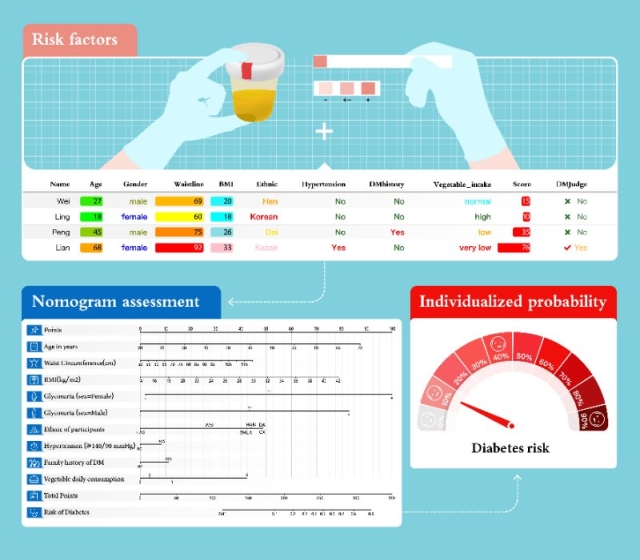Researchers from the School of Medicine, Southeast University, have developed a user-friendly, non-invasive tool for the early detection of the undiagnosed diabetes. This study was recently published in EBioMedicine supported by Cell Press and The Lancet.
Diabetes becomes one of the largest health emergencies worldwide. The number of people with this life-changing condition is increasing dramatically year by year. It is estimated that one in 11 adults aged 20-79 have diabetes worldwide, among whom nearly 50% are left undiagnosed. This situation is even more terrifying in China. The overall prevalence of diabetes in China ranged from 9.7% to 11.6% and among all patients with diabetes 60.7- 69.9% individuals are unaware of their condition. Moreover, evidence suggests that up to 25% of people with diabetes have developed microvascular complications at the time of diagnosis. Thus, early detection of undiagnosed diabetes seems extremely important in China.

Titled “Non-lab and semi-lab algorithms for screening undiagnosed diabetes: a cross-sectional study”, this article was co-authored by Wei Li, Bo Xie, Shanhu Qiu, Xin Huang, Juan Chen, Xinling Wang, Hong Li, Qingyun Chen, Qing Wang, Ping Tu, Lihui Zhang, Sunjie Yan, Kaili Li, Jimilanmu Maimaitiming, Xin Nian, Min Liang, Yan Wen, Jiang Liu, Mian Wang, Yongze Zhang, Li Ma, Hang Wu, Xuyi Wang, Xiaohang Wang, Jingbao Liu, Min Cai, Zhiyao wang, Lin Guo, Fangqun Chen, Bei Wang, Sandberg Monica, Per-Ola Carlssonl, Zilin Sun. With the support of the National Key R&D Program of China (2016YFC1305700), professor Sun’s team developed two simple-to-use nomograms (Non-lab and Semi-lab nomogram) and two accordingly websites (https://yunxuan.shinyapps.io/nonlabmodel/ and https://yunxuan.shinyapps.io/semilabmodel/ ) that use data commonly available in clinical practice to estimate individual risk of diabetes in different ethnic groups. With the introduction of postprandial 2-h period urine glucose, the semi-lab nomograms showed a 14.3% increment in specificity without lowering the sensitivity compared with the non-lab nomogram. With the assistance of decision curve analysis, the semi-lab model can save 52 subjects per 100 participants from the unnecessary OGTT test without increasing the false-positive rate. “Take the advantage of high specificity of thepostprandial 2-h period urine glucose and based on the full understanding of influence factor of this indexes, our semi-lab will bring enormous economic benefits for the diabetes screening in China”, Says professor Zilin Sun.


